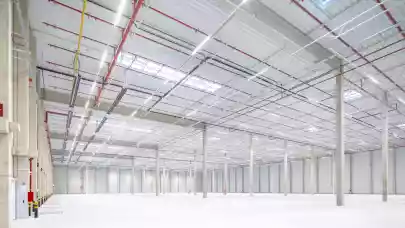
According to Savills, growth in prime rents is set to remain robust across the continent having increased by 10.4% in the last four quarters. This is despite vacancy creeping up to 3.5% in Q1 2023, reflecting the impact of slower leasing activity.
In the last quarters, the gap between headline and effective rents in Poland has compressed, as developers offer lower tenants’ incentives – e.g. shorter rent-free periods and reduced cash contributions. Today, effective rents range between €2.90 per sqm/month and €5.75 per sqm/month for BIG BOX units and above €5.75 /sqm/month for SBU. The growth of headline rents since the beginning of 2022 is estimated at around 15% - 25% on average, while effective rents have risen by approx. 20% - 30%.
This upwards trend in EU supply is likely to continue into Q2 and beyond until a slowdown in construction starts to translate into reduced completions later in the year. Vacancy rates rose in the majority of markets, most notably in Budapest (+210bps), Poland (+200bps) and the UK (+100bps). However, Savills has seen vacancy rates continue to decrease in both the Netherlands and Dublin, falling by 60bps and 30bps respectively in the first quarter.
In Poland, the vacancy ratio in Poland has increased at a fast pace to 6.2% in Q1, predominantly due to a large volume of new space delivered since the beginning of 2023.
In the course of Q1 2023, the volume of operating space in Poland has enlarged by approx. 7%, and since the onset of the pandemic the industrial and logistics stock has increased by more than half.
Andrew Blennerhassett, associate in the European logistics research team, comments: “While vacancy rates are rising in most markets, the constrained development pipeline over the past decade and strong take-up in recent years allow for further rate increases without triggering negative rental growth.”
From a take-up perspective, while the macroeconomic outlook is expected to become clearer, if not improve, by the end of the year, the overall slowdown in retail sales volumes and weak economic sentiment are starting to impact the occupier market. Savills estimates that European take-up amounted to 7 million sq ft in Q1 2023, reflecting a 16% decline compared to the five-year Q1 average.
Andrew continues: “Context is crucial in our analysis of the market, which experienced explosive expansion, with a period of moderation afterwards always probable. When comparing annual figures against Q1 2022, it is important to note that this is in line with the three years before the pandemic and that annual comparisons are against the strongest Q1 on record. Also, if we compare to Q1 2019 when the market was still considered strong by pre-Covid standards, take-up has increased by 1% suggesting a reversion to a pre-pandemic mean. What’s more, when the economy improves and e-commerce firms like Amazon become more active we would expect a strong recovery in the medium term.”
Looking at investment, Savills has seen volumes decline by 49% quarter-on-quarter and by 73% compared to Q1 2022, although notably, this was a record high. In fact the Q1 total of €5.1 billion was the lowest since the Global Financial Crisis (GFC) and 57% lower than the five-year average. On a country-by-country basis, Hungary, Norway, Belgium and France saw the largest declines, while the Czech Republic, Ireland and Portugal fared slightly better. Only Poland and Romania witnessed an uplift in investment.
Marcus de Minckwitz, head of EMEA industrial & logistics, adds: “A primary factor in this deceleration of investment volumes has been tighter monetary policy, as central banks continued to hike interest rates resulting in higher finance costs negatively impacting investor sentiment. Looking ahead, as the market stabilises and uncertainty decreases, we expect to see a pick-up in transactions as the year progresses.”
John Palmer, head of industrial Investment, Savills Poland, says: “Investors looking to forward fund industrial and logistics in Poland have more certainty in construction pricing in 2023. Construction costs have dramatically come down from the highs of 2022. We also see established contractors seeking new projects. Rental rates have moved up to levels not seen before in Poland. These factors result in a more attractive ‘yield on cost’ than seen last year on many projects. Investors are more and more quality and specification focused and realise the importance of all aspects of ESG in their investments. The main concern of investors is the uncertainty of exit pricing of commercialised products however we see this returning quickly once global markets stabilise.”



